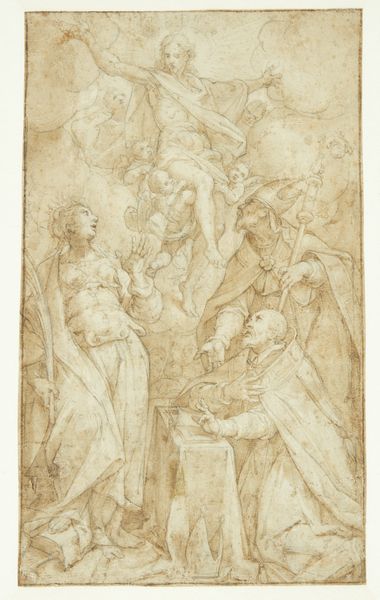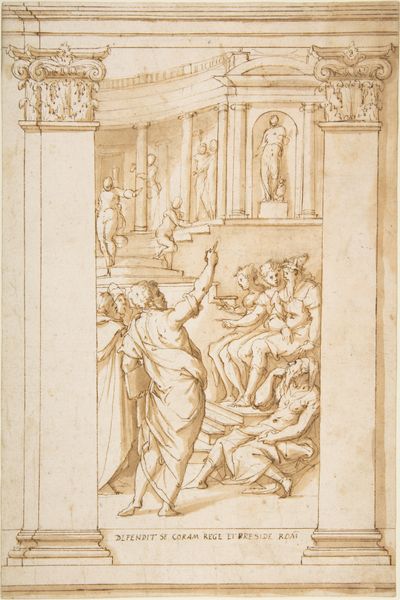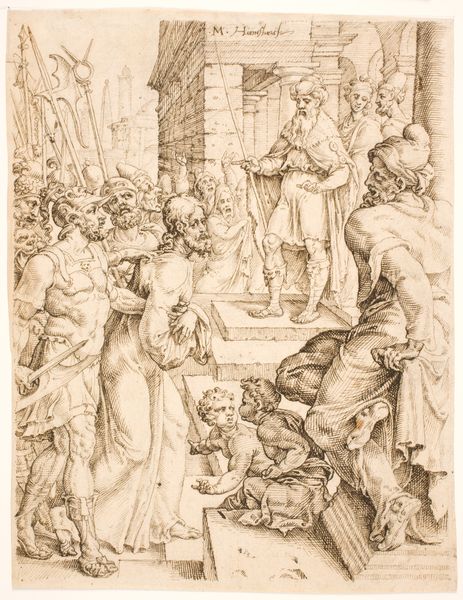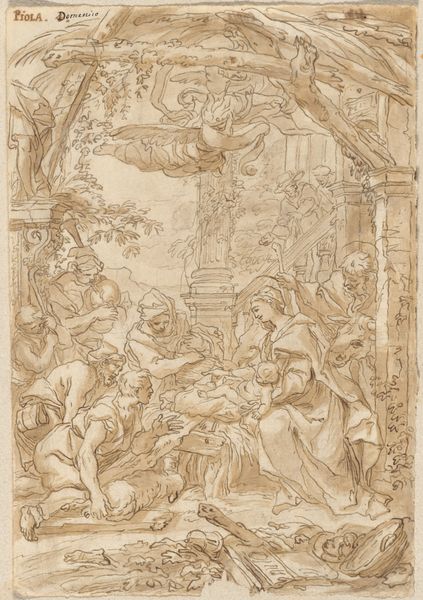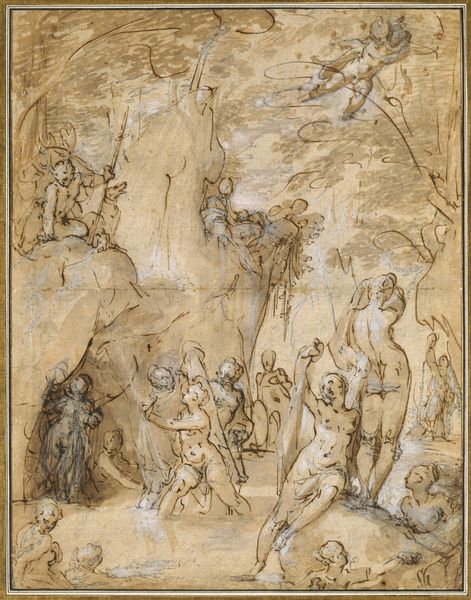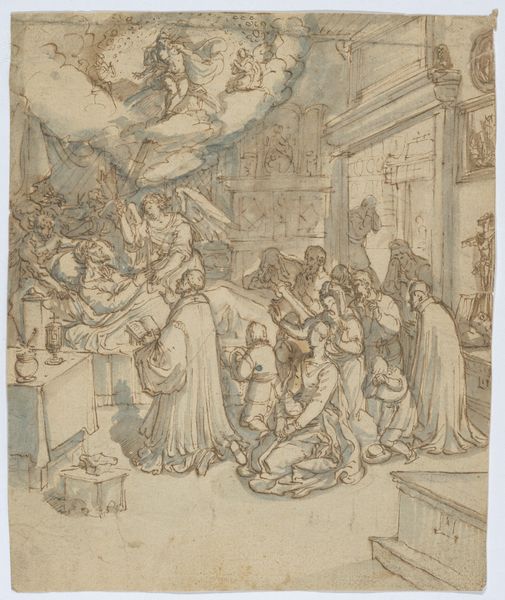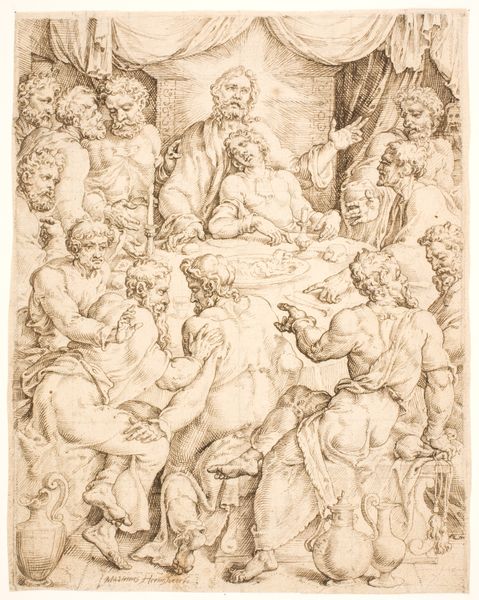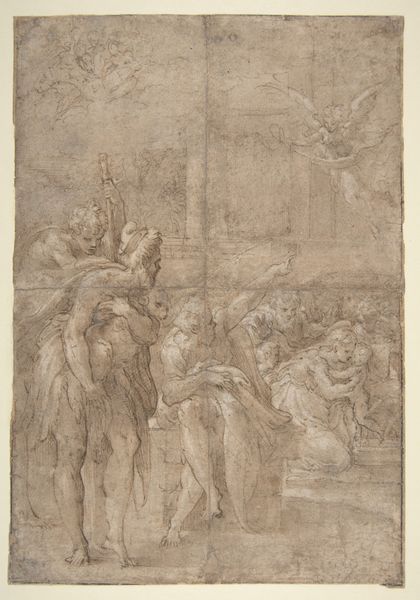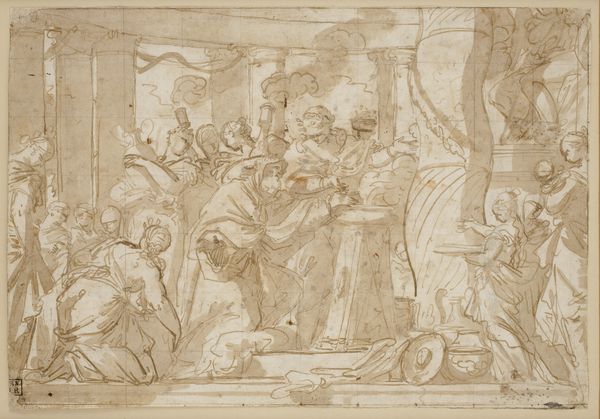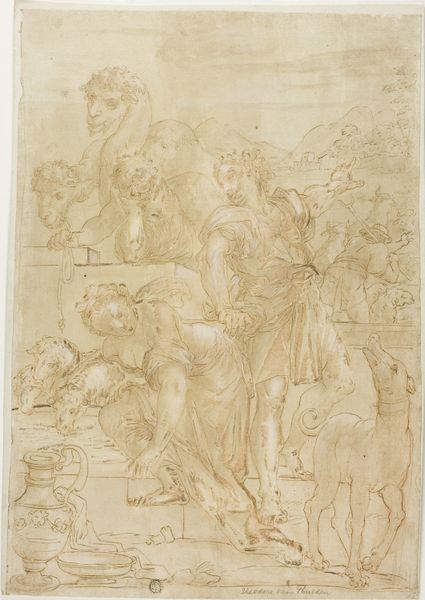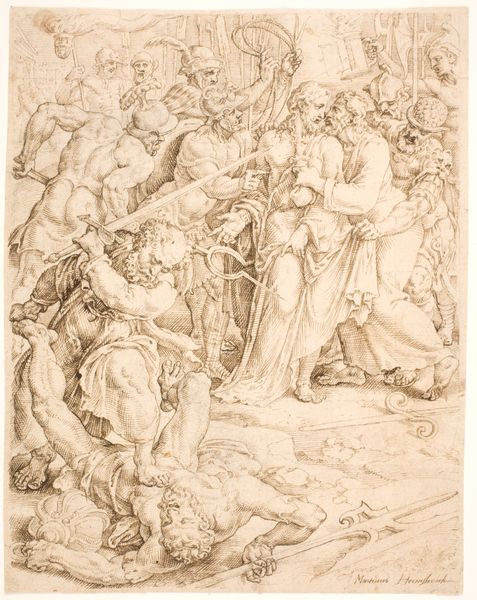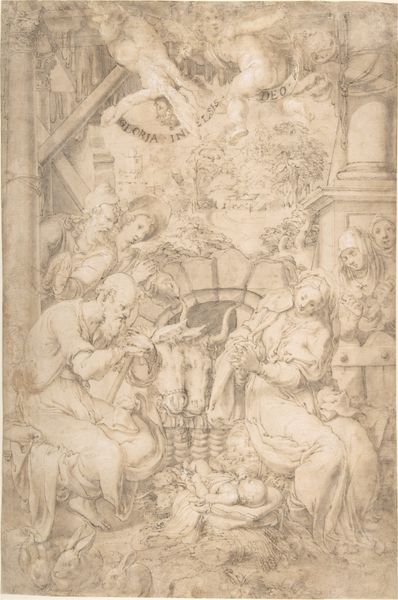
drawing, paper, pen
#
drawing
#
figuration
#
paper
#
11_renaissance
#
pen
#
history-painting
#
italian-renaissance
Dimensions: 11 5/8 x 8 15/16 in. (29.5 x 22.7 cm) (sheet)19 3/4 × 15 3/4 in. (50.17 × 40.01 cm) (outer frame)
Copyright: Public Domain
This drawing, "The Circumcision of Christ" by Pasquale Cati, was created using pen and brown ink on paper. The drawing's sepia tones lend a delicate warmth to the figures and the architectural setting. The artist's choice of medium – pen and ink – speaks volumes about the artistic practices of the time. This wasn't about rapid, expressive gestures, but rather a process of careful planning and precise execution. Each line carefully placed, contributes to the overall composition. Drawings like this were often preparatory studies for larger paintings, essentially the draftsmanship that underpinned all other artistic labor. The level of detail suggests Cati’s familiarity with classical forms and Renaissance ideals, highlighting the importance of skilled craftsmanship in artistic production. Ultimately, this drawing reminds us that even seemingly simple materials can be transformed into powerful expressions of faith and artistic vision. The careful craftsmanship evident here elevates the work beyond mere illustration, inviting us to consider the artistic labor involved in its creation.
Comments
minneapolisinstituteofart almost 2 years ago
⋮
Drawings by the Italian painter Pasquale Cati are extremely rare, and about half of his surviving studies (four sheets, including this one) pertain to one project: the decoration of the Altemps Chapel in Santa Maria in Trastevere, in Rome. The design’s irregular shape corresponds to its placement in an elaborately stuccoed ceiling vault that has twenty-one frescoes depicting the lives of the Virgin and Christ. Cati most likely executed a modello for each painting in the chapel—standard practice for 16th-century artists working in the unforgiving medium of fresco. This explains the high degree of finish in the study, with every detail seemingly worked out at this stage. The ostensible subject is Christ’s circumcision. However, the large, elaborately posed foreground figures dominate the scene. Such reversals of emphasis are in part why Roman fresco decoration of the time is described as being Mannerist.
Join the conversation
Join millions of artists and users on Artera today and experience the ultimate creative platform.
